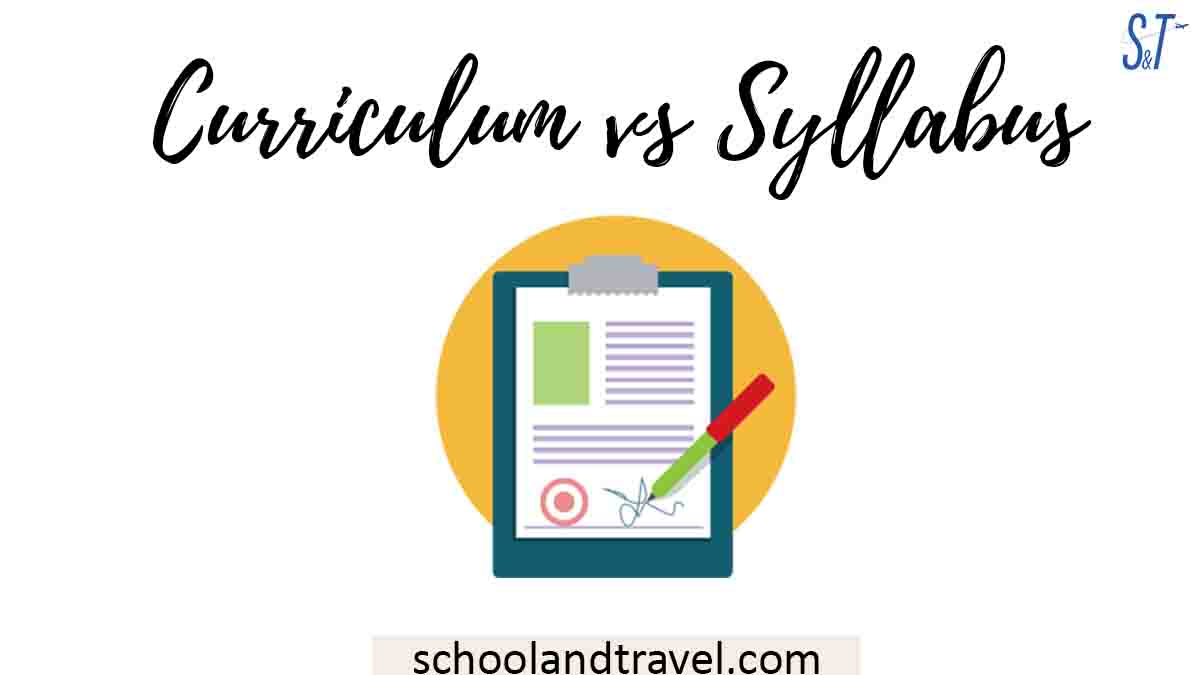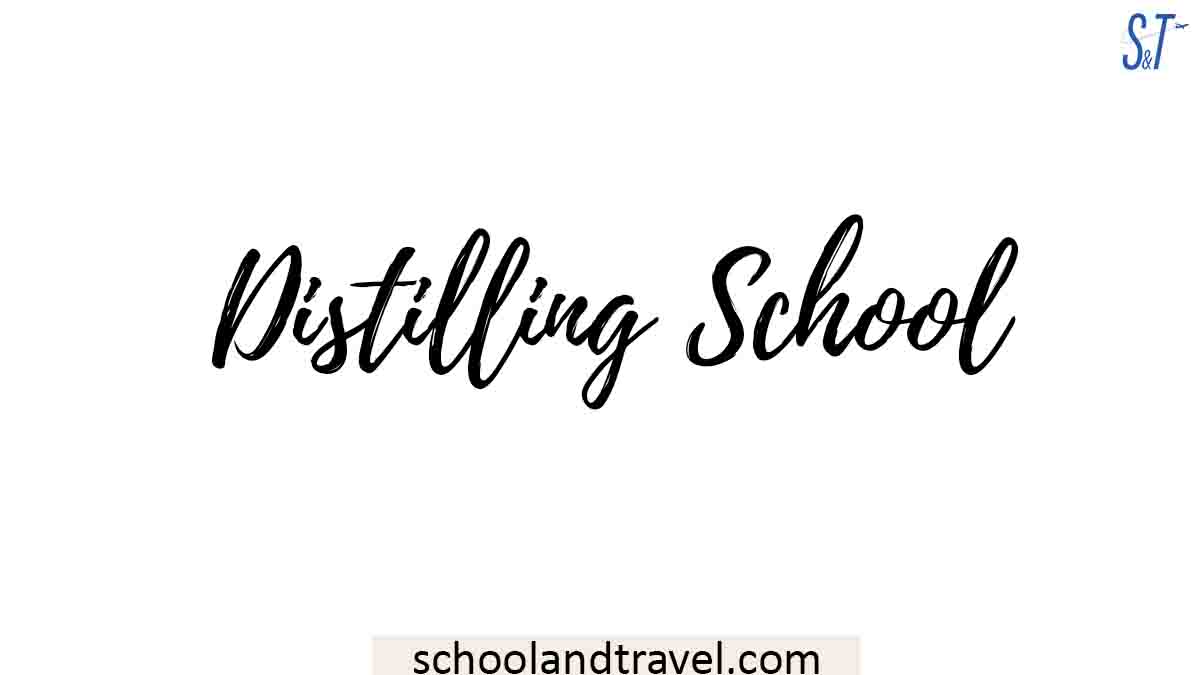Curriculum and syllabus are some of the most used words in the education sector. Although most people use the two words interchangeably, they have different meanings.
A curriculum is simply the guideline of the entire academic content for a particular course.
Professors, lecturers, and teachers must follow this guideline when rendering their services. Above all, curriculums are planned to enhance the mental development of students.
On the other hand, a syllabus is a description of the entire academic content of a specific subject, and it is designed by the professor, lecturer, or teacher taking the subject.
Most professors provide a syllabus to their students at the beginning of the learning practice to glimpse the various things they are expected to learn.
However, drawing up the perfect curriculum and syllabus plays a key role in students’ academic progress.
As a result, most schools invest a lot of time and resources to draw up the best curriculum for the course and, in rare cases, cross-check the teachers’ syllabi.
Curriculum vs Syllabus (differences)
Curriculum and syllabus are vital tools for learning, and they differ in the following ways;
1. Curriculums are the main deal:
Curriculums are the central education element of learning institutions and are designed standardized for a course or program. Without a curriculum, courses can’t run as they guide the authorities.
On the contrary, a syllabus is only designed for a particular subject, and although the ideas may be interconnected, different professors will continually formulate a different syllabus.
2. Higher authorities formulate curriculums:
Due to the sensitive nature of curriculums, government authorities or the higher university administration are responsible for designing curriculums that will perfectly suit the various courses before the beginning of another study period.
However, syllabuses are designed based on the ideas of the subject professors, with the arrangement made in a manner they feel is convenient for students.
Read this: PACKRAT Exam (Meaning, Benefits, Outlook)
3. Curriculums contain different formal sections than syllabuses.
Since a curriculum is a more official document, it is formally structured. Hence, parts of a curriculum include:
- Instructional content.
- Materials and resources.
- Physical and mental activities of the students.
- Assignments/tests/exams.
- Student success evaluation methods.
On the other hand, the less-formal syllabuses are sub-divided into;
- Objectives/policies
- Grading and evaluation system
- Learning resources
- Assignment descriptions/deadlines.
Nevertheless, each section in a curriculum or syllabus has its function.
Curriculum vs Syllabus
4. Curriculums require extensive research
No educational institution can provide a curriculum overnight. However, this tender document is formed due to extensive research that takes time.
High technical research is important when creating curriculums because it helps to obtain deeper investigation and thoughts that will shape the curriculum for the best.
On the contrary, designing a syllabus requires no research but consultation with the curriculum.
5. Curriculums are compulsory
According to the best practices for running any educational institution or school, curriculums must be in place before the commencement of the study period.
As a result, school administrators devote significant time and resources to finalizing curriculums before classes start.
Syllabuses, on the contrary, are mandatory documents that are only drafted to provide clues to students on the lessons they are expected to learn.
6. Curriculums are result-centered
Curriculums are vital documents designed to influence the result of the learning process by planning the size and forms of academic work that students must cover before completing the program.
However, syllabuses are drafted by the professors to focus on the daily tasks in the class. Nevertheless, combining these two as a tool for teaching helps educational institutions produce seasoned students.
Read this: What does it mean to be “SULA ELIGIBLE”?
7. Curriculums run for a long time
Curriculums run for a longer time than the syllabus.
For instance, the curriculum used by Oxford law students in a particular class when beginning their academic journey will remain their curriculum till they graduate, except in some special cases where it is very necessary few corrections can be made.
However, syllabuses change each time a new professor takes up that subject. Even when the same instructor keeps the course for another class, the syllabus changes to reflect their approach.
8. Curriculums are tools for only teachers and professors.
Curriculums are not shared with students because they are tools that help teachers and professors plan their work.
Teachers and professors, on the other hand, develop a syllabus in the best interests of students to assist them in grasping their responsibilities for the subject.
Hence, once designed, a syllabus is sent in emails or social media to students or, in a more conventional way, written on the lesson boards in class.
Curriculum vs Syllabus
9. Curriculums prescribe
Curriculums provide a step-by-step prescription for completing a course and attending maximum results in detail. On the other hand, a descriptive syllabus concentrates solely on the contents of a subject.
Anyone may create it to encourage students to take an interest in the subject.
10. Curriculums must be followed
When a teacher is changed, the new teacher can decide to continue with the pre-existing syllabus of the previous teacher.
However, they discontinued the syllabus and drafted a new one to replace the pre-existing one in most cases.
This is impossible with a curriculum because a dire situation, such as the death of a teacher, has no bearing on its utilization.
Frequently Asked Questions (FAQs) on Curriculum and Syllabus
The term “curriculum” refers to a series of lessons and activities designed to help pupils master both subject matter and transferable skills. The curriculum is the overarching plan for how and what students will be taught, so that all students have equal opportunity to succeed in school.
A school’s curriculum refers to the totality of its teaching materials and methods. A course’s syllabus is a detailed outline of what will be covered during the course. Course descriptions, learning outcomes, teaching strategies, and other pedagogical components are all included in the curriculum. The syllabus is a document outlining the course’s curriculum, including readings, lectures, assignments, tests, and more.
The course outline or syllabus is a document that is used in higher education. There’s a rundown of what you’ll be learning, along with when you can expect to have homework, quizzes, and exams. Each course you take in college will have a corresponding syllabus provided by your instructors.
A course’s syllabus can be made by an exam board or by the teacher or person in charge of the course.
Conclusion:
Although in comparing “Curriculum vs syllabus,” they are like two different documents, they share some close similarities. For instance, they are both planned to make learning processes more structured.
Also, in addition to the fact that government authorities decide and observe both curriculum and syllabus, they are followed during the entire course, help create an identity, enhance consistent learning and provide measurable targets for teachers and professors.
Awesome one; I hope this article answers your question.
Editor’s Recommendations:
- How old are you in 4th Grade (Best Answer)
- How old are you in 6th Grade (Best Answer)
- How old are you in 8th Grade? (Best Answer)
- 25 Hard Bible Questions and Answers That Burst Your Brain
- Do You Have to Go to Summer School? (FAQs)
If you find this article good, please share it with a friend.





